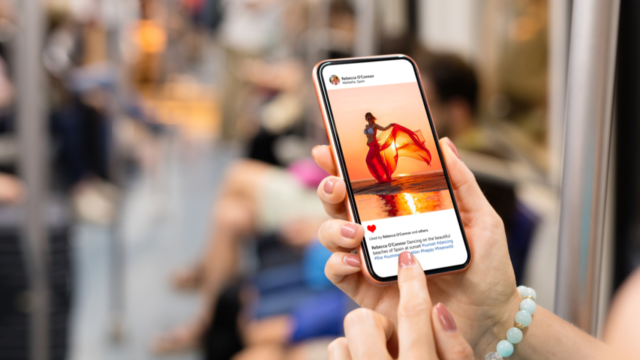In recent years, Instagram has evolved into one of the most powerful platforms for brands to connect with their target audiences. One of the most effective ways to harness this potential is through influencer marketing. Collaborating with Instagram influencers can significantly boost brand awareness, engagement, and ultimately sales. This blog will explore how to effectively use Instagram influencers for marketing to maximize your brand’s reach and impact.

Table of Contents
ToggleUnderstanding Instagram Influencer Marketing
Influencer marketing involves partnering with individuals who have a significant following and influence on social media, particularly Instagram. These influencers have established trust and credibility with their audience, making their endorsements a valuable marketing tool for brands.
Why Choose Instagram Influencers?
- Widespread Reach: Instagram boasts over a billion active users, providing a vast pool of potential customers.
- Targeted Audiences: Influencers often cater to specific niches, allowing brands to reach their target demographic effectively.
- High Engagement Rates: Influencer content typically receives higher engagement rates compared to brand posts, enhancing visibility and interaction.
Steps to Effectively Use Instagram Influencers for Marketing
1. Define Your Goals
Before diving into influencer marketing, establish clear objectives for your campaign. Are you looking to:
- Increase brand awareness?
- Drive traffic to your website?
- Boost sales for a specific product?
- Enhance engagement on your Instagram profile?
Defining your goals will help you measure the success of your campaign and guide your influencer selection process.
2. Identify the Right Influencers
Selecting the right influencers is crucial for the success of your campaign. Here are some factors to consider:
- Relevance: Ensure the influencer’s content aligns with your brand values and resonates with your target audience.
- Engagement: Look for influencers with high engagement rates (likes, comments, shares) rather than just a large follower count. This indicates an active and responsive audience.
- Authenticity: Choose influencers who maintain authenticity and transparency with their audience, as this fosters trust.
You can use tools like BuzzSumo, Upfluence, or Traackr to help identify suitable influencers in your niche.
3. Build Relationships
Once you’ve identified potential influencers, focus on building genuine relationships with them. Engage with their content by liking, commenting, and sharing their posts. Send personalized messages expressing your admiration for their work and explaining how you envision a collaboration. Building rapport will make influencers more likely to want to work with your brand.
4. Create a Clear Collaboration Plan
When reaching out to influencers, outline a clear collaboration plan that includes:
- Campaign Goals: Specify what you aim to achieve with the partnership.
- Content Guidelines: Provide details on the type of content you’d like them to create, whether it’s sponsored posts, stories, or product reviews.
- Compensation: Discuss compensation, whether through payment, free products, or affiliate commissions.
- Timeline: Set deadlines for content creation and publication.
Transparency in your expectations will help ensure a smooth collaboration process.
5. Leverage Different Content Formats
Influencers can create various content types to promote your brand, including:
- Sponsored Posts: Traditional posts featuring your product or service with engaging captions.
- Stories: Short-lived content that can showcase behind-the-scenes looks, product demos, or special promotions.
- Reels and IGTV: Short videos that can highlight your products in an entertaining and engaging manner.
- Giveaways and Contests: Collaborating with influencers on giveaways can drive engagement and expand your reach.
6. Monitor Campaign Performance
After launching your influencer marketing campaign, closely monitor its performance to assess its effectiveness. Use tools like Google Analytics, Instagram Insights, and tracking links to measure key performance indicators (KPIs) such as:
- Reach and impressions
- Engagement rates (likes, comments, shares)
- Website traffic generated
- Conversion rates and sales
Analyzing this data will help you understand what worked well and what needs improvement for future campaigns.
7. Foster Long-Term Partnerships
Rather than viewing influencer collaborations as one-time transactions, consider nurturing long-term relationships with influencers. Ongoing partnerships can lead to more authentic endorsements and a consistent brand presence in the influencer’s content. This strategy also allows you to build a stronger connection with their audience over time.
8. Stay Compliant with Regulations
It’s essential to ensure that both you and the influencers you partner with adhere to advertising regulations. The Federal Trade Commission (FTC) requires influencers to disclose their partnerships with brands. This can be done by using hashtags like #ad or #sponsored in their posts. Ensuring compliance will protect both parties and maintain transparency with the audience.
Conclusion
Using Instagram influencers for marketing can significantly enhance your brand’s visibility and engagement when executed correctly. By defining your goals, selecting the right influencers, fostering relationships, and monitoring performance, you can create impactful campaigns that resonate with your target audience. As the influencer marketing landscape continues to evolve, staying adaptable and innovative will be key to your brand’s success on Instagram. Start harnessing the power of influencers today to elevate your marketing strategy and achieve your business objectives!


No responses yet